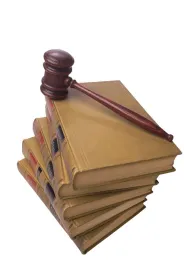A cornerstone of US administrative law, Chevron deference, is in flux. That fluctuation and its eventual resolution will impact US businesses, including in the promulgation of critical environmental regulations. Chevron deference describes a doctrine articulated by a unanimous US Supreme Court in its 1984 decision, Chevron USA, Inc. v. NRDC. The late Justice Scalia—a former administrative law professor and sometime defender of Chevron deference—articulated the doctrine in a 2015 decision as follows: “Chevron directs courts to accept an agency’s reasonable resolution of an ambiguity in a statute that the agency administers.” Justice Scalia also noted in a different 2015 decision that Chevron deference “provides a stable background rule against which Congress can legislate.” Finally, though his views evolved over his career, Justice Scalia explained in a different context, that the deference is grounded in the notion that agencies, unlike courts possess “expertise,” an “intense familiarity with the history and purposes of the legislation at issue,” and a “practical knowledge of what will best effectuate those purposes.”
All that may not matter. Developments at the US Supreme Court or Congress (or both) could result in a fundamental change or wholesale elimination of the doctrine.
US Supreme Court’s Willingness to Reconsider Chevron Deference
At the judicial level, Chevron deference may be curtailed by the President’s nominee to replace Justice Scalia, Judge Neil Gorsuch of the Tenth Circuit. Though Judge Gorsuch’s originalist judicial philosophy means many commentators compare him favorably to Justice Scalia, he appears to differ with the late Justice in his view of Chevron deference. In a concurring opinion addressing an agency’s interpretation of conflicting statutes, Judge Gorsuch did not mince words in voicing his opposition to the doctrine (emphasis added):
[T]he fact is Chevron . . . permit[s] executive bureaucracies to swallow huge amounts of core judicial and legislative power and concentrate federal power in a way that seems more than a little difficult to square with the Constitution of the framers’ design. Maybe the time has come to face the behemoth.
. . .
Yet, rather than completing the task expressly assigned to us, rather than interpreting statutory provisions, declaring what the law is, and overturning inconsistent agency action, Chevron . . . tells us we must allow an executive agency to resolve the meaning of any ambiguous statutory provision. In this way, Chevron seems no less than a judge-made doctrine for the abdication of the judicial duty.
Given his view, if Judge Gorsuch is elevated to the Supreme Court, his presence could galvanize the Court to reconsider, reformulate, and reduce Chevron deference.
Legislative Challenges to Chevron Deference
On the legislative front, in January 2017, the US House of Representatives passed the Regulatory Accountability Act of 2017. That law included language purporting to repeal Chevron deference by requiring courts to review “de novo” (without deference) all agency action. Proponents of this legislative change celebrated the move as Congress reigning in out-of-control bureaucrats. According to that view, the change prevents the President from using:
. . . a pen and a phone in an end run around Congress [to] push job-killing regulations on Americans.
The New York Times Editorial Board, however, views the elimination of Chevron deference as an Assault on Health and Safety:
The Republicans claim they want to reform the rule-making process to make regulators more accountable. But the practical effect of the bills, and their real intention, is to give Congress new power to repeal existing rules and block new ones. In essence, they would attack the protections in bedrock laws like the Clean Air Act, without directly attacking the laws—or incurring the public wrath that would come with a frontal assault.
Both sides raise reasonable arguments about the costs and benefits of a post-Chevron regulatory regime. On the one hand, agencies and the regulations they promulgate impact a wide range of activity, and it is reasonable for Congress—the people’s representatives—to maintain a check on agencies’ operations. On the other hand, the current legislation winding its way through Congress could functionally curtail agencies in carrying out their missions by allowing federal judges to second-guess agencies’ interpretations of their respective enabling statutes.
For the business community, the elimination or modification of Chevron deference cuts both ways. The elimination of Chevron deference may give businesses negatively impacted by a rule a clearer path to defeating that rule in federal court. So in instances where an agency overreaches—promulgates a rule outside the scope of the agency’s statutory mandate—the ability to challenge that rulemaking de novo is valuable. Yet the lack of deference to agency rulemaking could result in greater regulatory uncertainty. Without Chevron, every rule is open to a fresh review by a non-expert federal judge. As a result, businesses may face greater uncertainty about the regulations under which they must operate.




 />i
/>i

